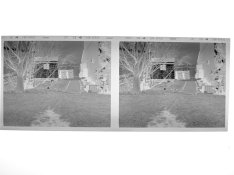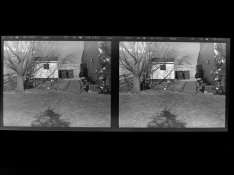Hi guys,
I was "out of order" for a few days, then the board was, and now I read this topic. I'm pleased that interest in Caffenol-C is still big and my blog is quoted several times. I didn't expect this attention when I started.
This is a great topic with lots of important aspects.
First some thoughts about scanning vs. darkroom prints: Concerning grayscale you can capture much(!) more information with a scanner than on a print. Even with a modest scanner like my Canoscan 8800F. So uneven development will be much more visible when scanning. Implied you use a good scanning program and know how to use it. No point of discussion anymore for me. Concerning sharpness every modest enlarger/lens outperforms any affordable scanner hands down. Implied you know how to use your enlarger. No point of discussion anymore for me. Feel free to disagree of course.
I had only very few to no probs with uneven development until now. I made some experiments with low pH-Caffenol-C to improve grainyness and fog. I did get usable but still improvable results. Because developing time will be probably longer than with "regular" Caffenol-C, I decided to give stand development a try. The results were interesting. More fog, lower film speed, some smaller grain, but massive uneven development. See the comparison here:
http://img233.imagevenue.com/img.php?image=36614_teststandvsagit_122_58lo.jpg

APX 100: low pH stand development vs. Caffenol-C-M standard agitation as described in my blog.
I made no proper blackpoint adjustments to make the differences more obvious. I thought before that agitation probably might be the key to even development and I have the feeling that low pH increases the problem.
The uneven development is caused by bromide streaks. Bromide coming out of the emulsion sinks down and inhibits the development. Important: the shown sample pic is upside down! Where the sprocket holes are, the bromide stream is interrupted and we find more development below the holes. Finally the bromide accumulates at the bottom of the tank and there we find the least development. You can also see less development below parts of the neg that are heavy exposed. More bromide is set free there, sinks down and inhibits development.
I'm sure this is the explanation for the phenomenon. Agitation helps. I have good experiance with the fast Xtol-like agitation regime, 5 fast tilts in 5 seconds, every 30 seconds, like given in the Xtol datasheet. That is obligatory for Xtol, and Caffenol-C behaves quite similar in many ways.
It also explains why different films behave different. Old style emulsions contain more bromide, newer ones more jodide. That also explains different experiances. The APX 100 seems to be very sensitive. Adding potassium bromide may help, if bromide is present from the beginning in a good amount the effect may be decreased, but also film speed. So agitation is the key. If you encounter uneven development, agitate more. Modern emulsions like TMax, Delta or Acros are much less sensitve and show less fog with coffee developers.
Btw, the biggest problems seems to be with large format sheet films as far as I read here and elsewhere. No miracle as you can't turn the sheet container upside down?
Fog is not the major problem, it's the agitation - imho. Thank you guys for thinking about this. Waiting unpatiently for your comments.
Cheers from Heidelberg/Germany - Reinhold aka grommi aka imagesfrugales :-D
PS: in the meanwhile, when the board was closed, I published the recipe for a low-pH, low grain, low fog Caffenol-C-L, suitable for (semi-)stand development, see my blog.



 ), since I don't know if emulsifying is even the right term here. But the idea seems plausible at least. So again, maybe another thing that could be tried.
), since I don't know if emulsifying is even the right term here. But the idea seems plausible at least. So again, maybe another thing that could be tried.


